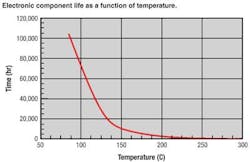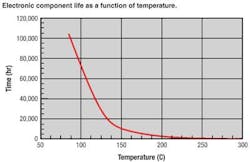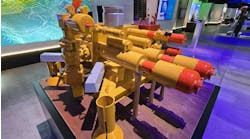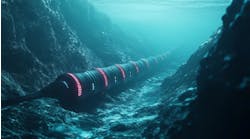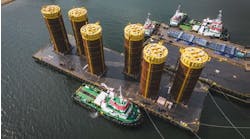Ian Verhappen
Yokogawa Canada
There are a number of television shows about "extreme" events, sports, and other activities, but what is not shown is how the equipment is managed to operate for extended periods in those environments. Offshore certainly qualifies as an extreme environment. With the temperature extremes that are experienced in the North Sea, Arctic, and equatorial settings, the challenges of operating offshore increase.
Installations in the Arctic, at least in Canada, are based on a design spec of -50°C (-58°F) to 40°C (104°F) for the following reasons. The -50°C design spec requires the devices to "start cold" at this temperature when power is reapplied after an outage. It does not mean that the local display needs to work, but that the device must power up and start providing useable measurements at this temperature. Liquid crystal display is no longer liquid at approximately -25°C (-13°F). The 40°C design spec is for the summer. Because the sun does not set during this time, there is no evening cooling affect. So when a warm spell comes, the temperature continues to increase until the weather system changes.
When it comes to temperature, most installations and designs are more concerned with the upper temperature specification because of the potential impact on electronics reliability.
A common "rule of thumb" states that every 10°C increase in temperature cuts component life in half. This "rule" comes from basic chemistry, where there is a general principle that chemical reactions go faster with higher temperatures. Years ago, the military adapted that concept to predict how temperature leads to electronic component failure. They gathered tons of questionable data from the field, correlated the data with this iffy assumption about chemical reaction rates, and came up with MIL-HDBK-217, the military handbook on electronic reliability. MIL-HDBK-217 quickly became an industry standard, and hence, the source of the myth. However, MIL-HDBK-217 states that long-term nominal operating junction temperatures operating lower than 70°C (158°F) have zero effect on reliability. Therefore, it is unlikely that failure rates will follow an exponential curve based on Life Equivalent to 40 Years in Hours at a relative to temperature basis of 60°C (140°F) Ambient.
In addition to temperature, electronic products and mechanical devices that are exposed to any environment (indoor or outdoor) are commonly also exposed to intrusions by dirt, dust, and insects; sprayed/dripped/directed moisture; and curious poking fingers.
Ingress Protection (IP) is the industry standard term created by the International Electrotechnical Commission (IEC), while in North America, the NEMA (National Electrical Manufacturers Association) rating is commonly used. It is not possible to directly correlate NEMA numbers with IP numbers, but there are many tables available on the internet that show the equivalency. Since many devices are manufactured for global distribution, they will display both ratings.
In the IP system, the first number indicates the degree of protection both from intrusion of objects and protection to the user from hazardous parts or mechanisms inside the product. The second digit in the IEC assigned IP-number indicates protections from liquids. Unfortunately, the NEMA system is less rigorous in its method of number assignment.
In many cases, the integrity of the enclosure also relies on the correct installation of cable glands/seals to prevent ingress of liquids (corrosion or short circuit) and gases (explosion). Breathers/drains should be installed on all enclosures to manage not only changes in temperature but also the associated potential condensation.
In addition to condensation, offshore installations are exposed to severe storms and salt water, so in addition to protection from the standard water, dust, and oils, the materials of fabrication also need to consider materials compatibility.
The most widely selected choice for enclosures is metal, and in the offshore environment this is typically stainless steel. However, many types of stainless steel are susceptible to stress corrosion cracking when exposed to chlorides such as the salt in sea water, so it is important to select the correct version of stainless steel for the environment. Onshore installations typically use lower cost epoxy coated steel, but coastal facilities often also need to design for the salinity.
One alternative to steel at least for enclosures is fiberglass or glass fiber reinforced polyester (GRP). GRP enclosures have the additional benefit that should an insulated enclosure be needed they can be made with a typically foam insulation between two layers of GRP or fiberglass with suitable heaters and windows included. The gaskets and mechanical closures must still be selected for the environment.
If the device, its packaging, and installation are not properly specified and installed for the environment, the signals and controllers used to monitor and control a process could fail at the most inopportune time. Just like many control and automation items, it is the small details that make a big difference to how effective a system will operate.
The author
Ian Verhappen, P. Eng. is an ISA Fellow, ISA Certified Automation Professional (CAP), and a recognized authority on Foundation Fieldbus and industrial communications technologies. Verhappen is managing director of Yokogawa Canada, a global supplier of instrumentation products and advanced control systems. He can be reached at [email protected].
